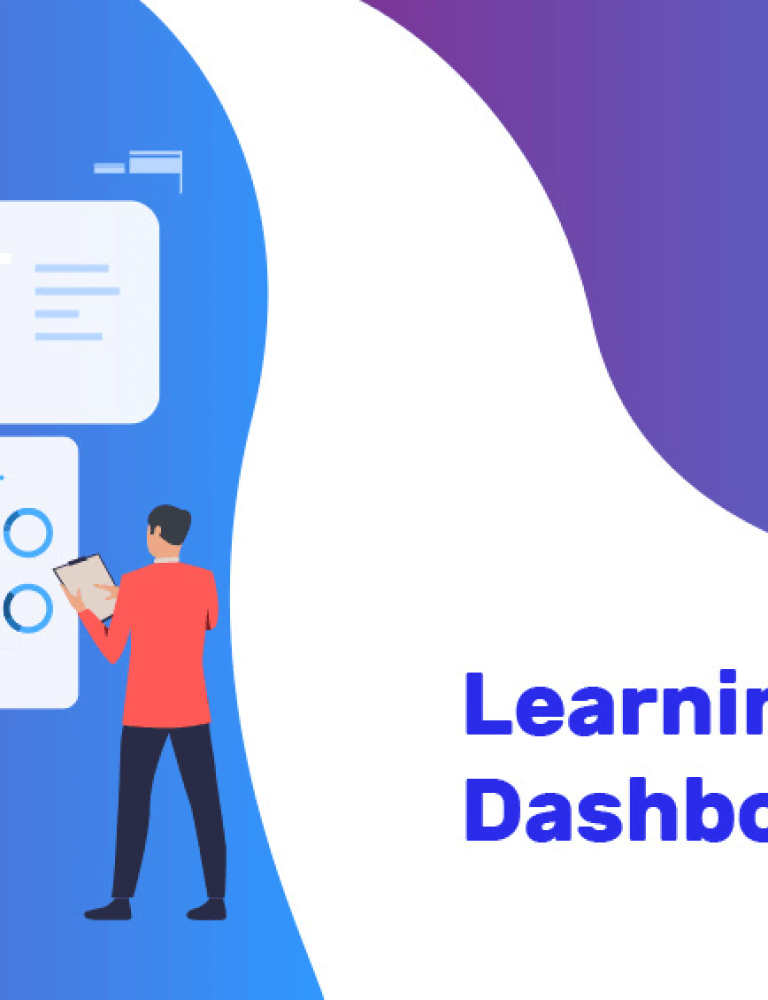Interactive content is driving a transformation in education, surpassing traditional methods. Firstly, it is established that digital reading experiences surpass traditional procedures, considering the popularity of eBooks in the modern world. Secondly, the popularity of eBooks is defined by the fact that dynamic digital books not only tell stories but have also become the predominant method of education delivery.
Whether it is K–12 learning, higher education, or professional training for employees, interactive eBooks are enhancing the learning experience by making content more captivating. Traditionally, the interaction between storyteller and listener led to increased engagement and attention. Interactive eBooks, which promote reader involvement with visual and audio features, mimic this interaction in the modern world and greatly improve the eLearning experience.
Leading digital textbook platforms like KITABOO are revolutionizing digital learning, enabled by cloud-based learning management systems, by creating eBooks with interactive elements that are accessible across various devices.
Let us understand more about the relevance, scope, and demand of interactive elements in digital content in this guide and how they are transforming learning experiences!
Table of Contents
I. The Changing Educational Environment
II. Impact of Interactive eLearning
- Engaging Experiences
- Enhanced Learning
- Cross-Platform Compatibility
- Cost-effective and Environmentally Friendly
- Promotes Inclusivity
III. Relevance of Interactive eBook in Academic Learning (K–12 and Higher Education)
IV. Relevance of Interactive eBook in Professional Learning
- Enhances Motivation and Engagement
- Amplify Engagement
- Personalized Learning Experiences
- Relevant learning Material
The Changing Educational Environment
Learning is a dynamic field that has moved from traditional classroom learning to online learning and then to customized and hybrid learning. With a 900% increase since 2000, eBooks have become the dominant learning tool for students in place of traditional paperback books.
Let us look at some integral facts and stats here:
- Corporate learning and training has seen the greatest transformation, with 80% of trainers adopting eLearning since 2011, and a whopping 93% of companies worldwide expressing interest in its implementation.
- Academia, with 40% of college students finding eLearning beneficial
- eBooks boost student retention by 5x and organizations save up to 70% on training costs with eLearning.
Impact of Interactive eLearning
Readers are drawn to their immersive features, and publishers are taking note. Some of the key features of interactive learning include:
1. Engaging Experiences
Research shows that 85% of readers prefer interactive eBooks for their engaging multimedia content and interactive features. These eBooks integrate diagrams, charts, images, infographics, audio, videos, and 3D graphics, enhancing storytelling and comprehension
2. Enhanced Learning
Students using interactive eBooks demonstrate a considerable improvement in knowledge retention compared to traditional textbooks. Further, content creators and publishers can curate content according to the personalized demands of individual readers, leveraging analytics for audience insights.
3. Cross-Platform Compatibility
Interactive content can reach readers on any device without compromising quality. It is reshaping the education landscape, offering an engaging and effective way to learn.
4. Cost-effective and Environmentally Friendly
Interactive eBooks present a cost-effective alternative to traditional textbooks. By embracing digital resources, organizations can reduce expenses associated with procuring and updating printed materials.
Furthermore, interactive eBooks promote environmental sustainability by eliminating the need for paper production and minimizing waste, which eventually contributes to a greener educational ecosystem.
5. Promotes Inclusivity
Interactive eBooks ensure inclusivity, welcoming individuals of all abilities and disabilities into the realm of literature. Through diverse features and functionalities, encourage a truly inclusive literary environment for individuals with visual impairments, physical disabilities, cognitive disabilities, and hearing impairments.
Superior digital textbook platforms like KITABOO offer adjustable font sizes, high-contrast text, and text-to-speech capabilities, enabling all readers to customize their reading experience to their specific needs.
Relevance of Interactive eBook in Academic Learning (K–12 and Higher Education)
Interactive eBooks have transformed K–12 learning and engagement with reading material, presenting numerous advantages that aid in the development of early literacy skills. These digital resources integrate interactive elements like touch-and-play features, animations, and sound effects, elevating the reading experience for young readers.
Here are different methods through which interactive eBooks can cultivate early literacy skills in children. Interactive content helps young learners get well-versed in a variety of concepts, including:
- Phonics and word recognition, along with enhancement of numeracy skills
- Vocabulary expansion, comprehension, and storytelling skills
- Using animations, charts, graphs, games, diagrams, infographics, or interactive puzzles to help STEM learning
- Multimodal Learning for different learning styles
- Establish connections between different forms of representation.
- Cultivate critical thinking and problem-solving skills
- Use interactive scenarios and simulations to observe real-time outcomes.
- Introduce scientific concepts and real-world scenarios to encourage analytical thinking.
- Assessment and Progress Monitoring
- Embedded interactive quizzes
- Gamification to enhance learning and engagement.
- Offer immediate feedback and rewards
Relevance of Interactive eBook in Professional Learning
Here are some significant ways in which interactive eBooks augment professional development and learning:
1. Enhances Motivation and Engagement
Interactive eBooks employ gamification elements to motivate and engage professionals. By integrating interactive games, eBooks instill a sense of enjoyment and achievement, prompting active participation in the reading experience.
Additionally, the interactive nature of these eBooks provides immediate feedback, enabling trainees to understand the consequences of their actions and further motivating them to explore and interact with the content.
2. Amplify Engagement
The integration of multimedia elements augments thorough interaction with professionals through interactive learning material. You can include animations, AR/VR tools, and historical events with relevant videos and images, enabling trainees to grasp and absorb the subject matter more effectively.
3. Personalized Learning Experiences
Interactive learning content can easily be adapted to individual learning styles and preferences. Organizations can customize the learning content to accommodate the diverse needs of their trainees or new hires.
Additionally, interactive eBooks provide immediate feedback and explanations, aiding professionals in comprehending concepts more thoroughly.
4. Relevant learning Material
Case studies underscore the positive impact of interactive eBooks in professional settings. This can include incorporating real-world examples, case studies, and scenarios that resonate with their professional experiences.
Interactive elements such as quizzes and simulations can enhance engagement and facilitate active learning, allowing learners to apply concepts in a practical context. eLearning interactive content can effectively support the continuous professional development and skill enhancement of professionals and trainees.
Tips for Embracing Interactive eBooks
Here are some key factors regarding interactive digital content, that you must consider before you publish your eBook to captivate readers and offer immersive learning:
Choice of Software
Another critical factor to consider is trusting the right software and application for professional publishing services and weighing the pros and cons of each. Self-publishing can be cost-effective; however, it requires meticulous effort.
Professional services like KITABOO provide expertise and ensure quality and broad audience reach. Collaborating with the right digital textbook platform can elevate the eBook’s impact and optimize your eBook development journey.
Follow Trends
Publishers need to stay informed about the latest advancements in interactive eBook technology. As technology progresses, new features and tools emerge. Content creators must experiment with diverse interactive elements and explore the array of interactive features offered by eBooks.
Apply Relevant Feedback
Publishers need to consider feedback and adjust accordingly. Like any new technology, it’s crucial to seek input from readers or students and adapt based on their responses to enhance the overall learning experience.
Define Target Audience and Objectives
Publishers need to develop a comprehensive plan and structure the eBook with interactive elements. They must assess who will be using the eBook and with what learning goals. Accordingly, coherent and relevant eBooks with interactive elements should be published.
Balance Multimedia Elements
An excess of everything is not welcome. Thus, publishers must strike a balance when creating informative content with file size limitations and copyright considerations.
Further, content creators must harness the power of design to amplify reader engagement. Focus areas include color, style, and design of eBooks, along with the right choice between fixed or reflowable layouts based on device compatibility and user experience.
Conclusion
Embracing interactive eBook technology benefits users with personalized learning opportunities and offers them a more engaging, inclusive, and effective reading and learning experience. The eLearning process is currently going through continuous evolution, mainly due to technological advancements and market dynamics.
Interactive eBooks help enrich learning experiences and integrate educational learning extensively into training programs. By embracing this revolution, publish your eBook to enrich the convenience, comprehension, engagement, and enjoyment of digital readers across various learning environments.
KITABOO, a leading digital textbook platform, offers professional services and solutions that help publishers and content creators transform content into engaging and interactive eBooks swiftly.
Discover How An Ebook Conversion, Publishing & Distribution Platform Can Help You
Kitaboo is a cloud-based content platform to create-publish & securely distribute interactive mobile-ready ebooks.
You May Also Like
-
Learning Analytics Dashboard – A Detailed Guide
Blog,Digital Publishing,eBook solution / February 6, 2024
-
Interactive eLearning: What to Expect in 2024
Blog,Digital Publishing,eBook solution / February 29, 2024








